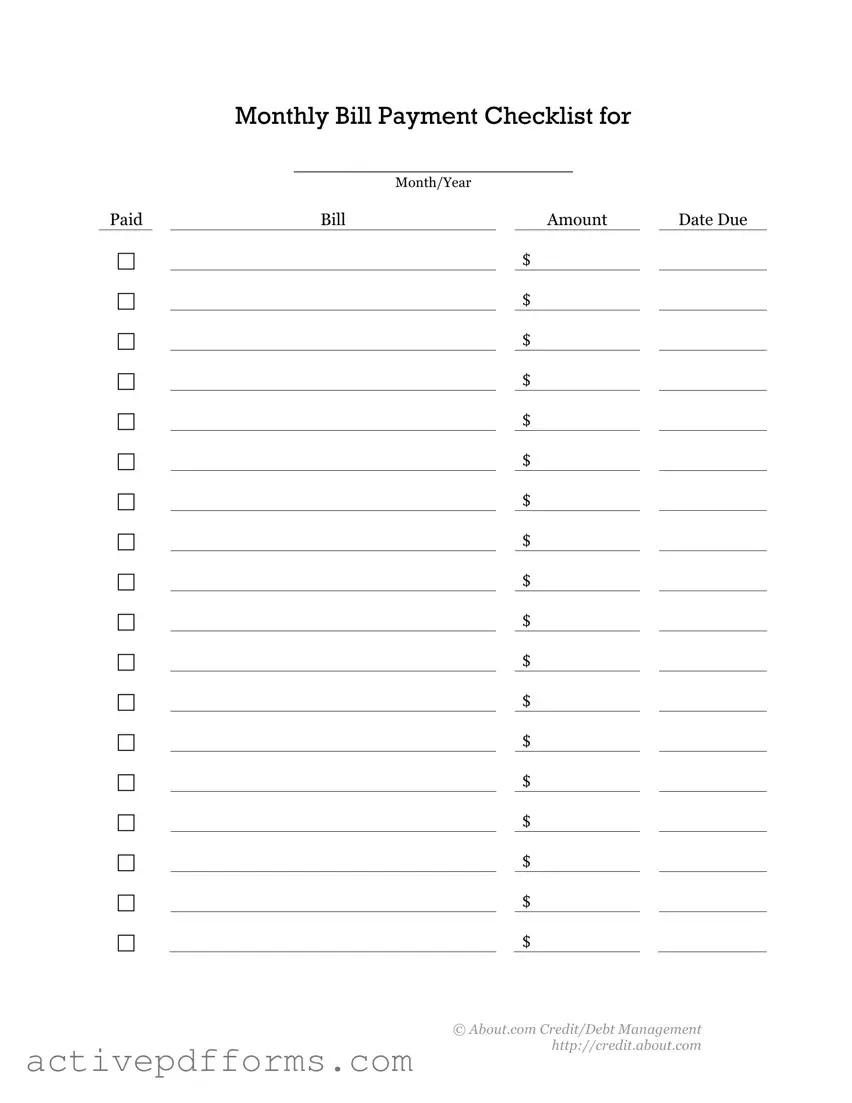In today's fast-paced world, managing personal finances efficiently becomes crucial for peace of mind and economic stability. An instrumental tool in achieving this is the Bill Payment Checklist, which serves to simplify and organize financial obligations in a systematic manner. This form, meticulously structured to track monthly bills, ensures individuals can monitor their due payments effortlessly. By providing a comprehensive overview of each bill, including the amount and due date, it directly contributes to more disciplined and punctual financial management. Originally crafted by experts in credit and debt management, and shared via a platform renowned for its valuable financial advice, this checklist not only aids in avoiding late payments and the consequent fees but also aids in developing a clearer understanding of one's financial health over the months. Recipients are encouraged to customize the checklist, filling in bill details pertinent to their financial landscape for any given month, thereby rendering it an indispensable tool for anyone looking to exert greater control over their personal finances.

